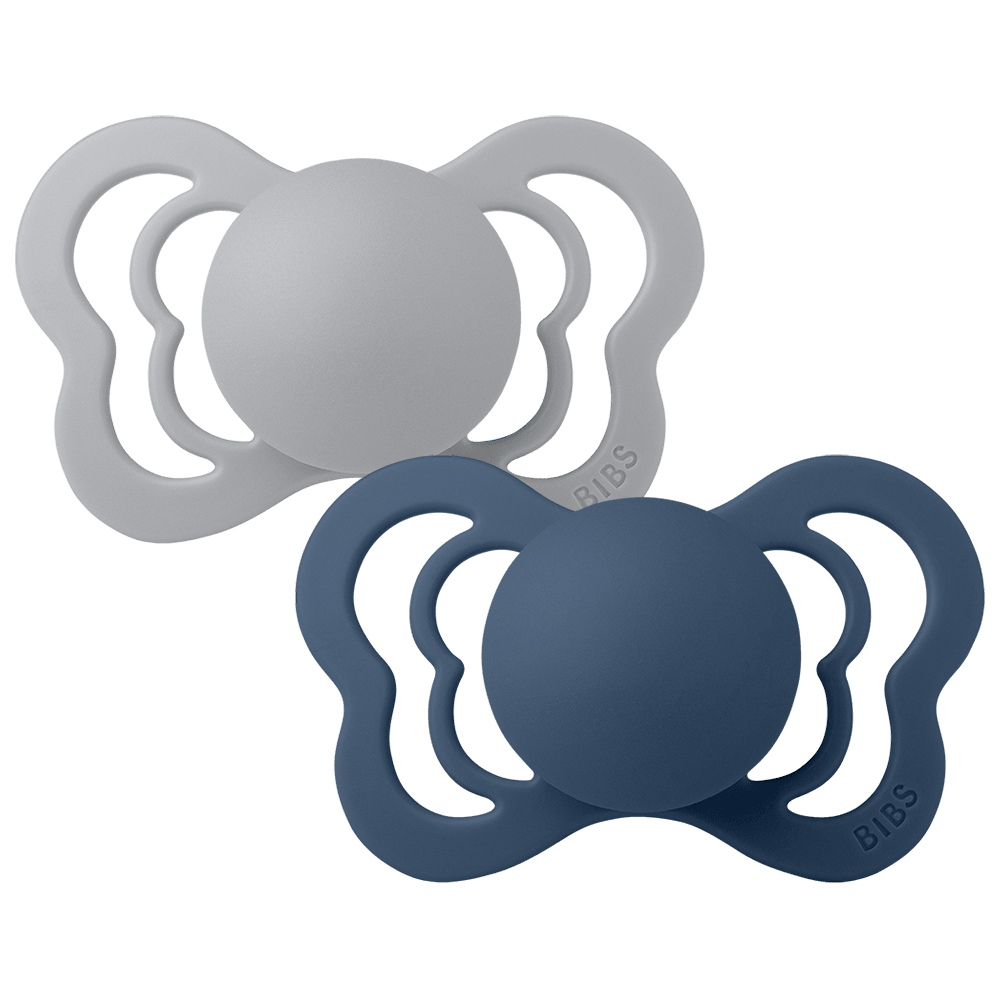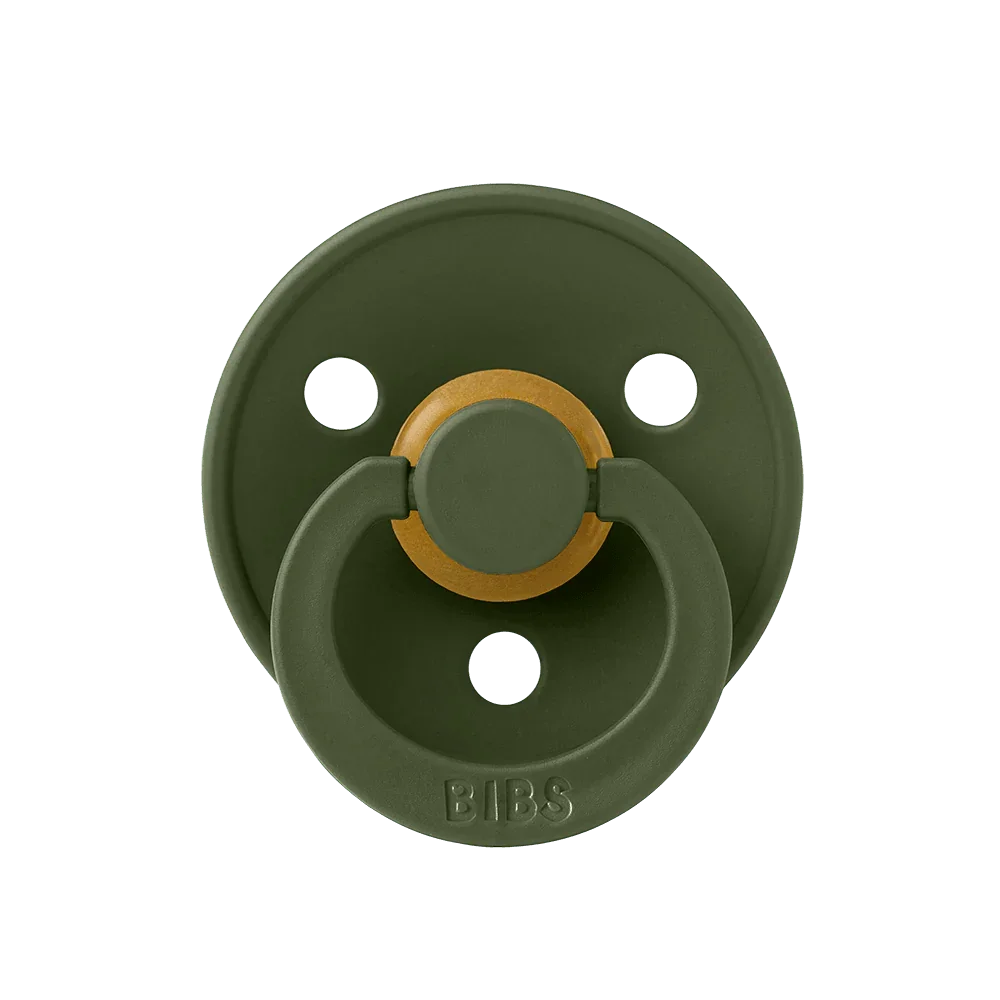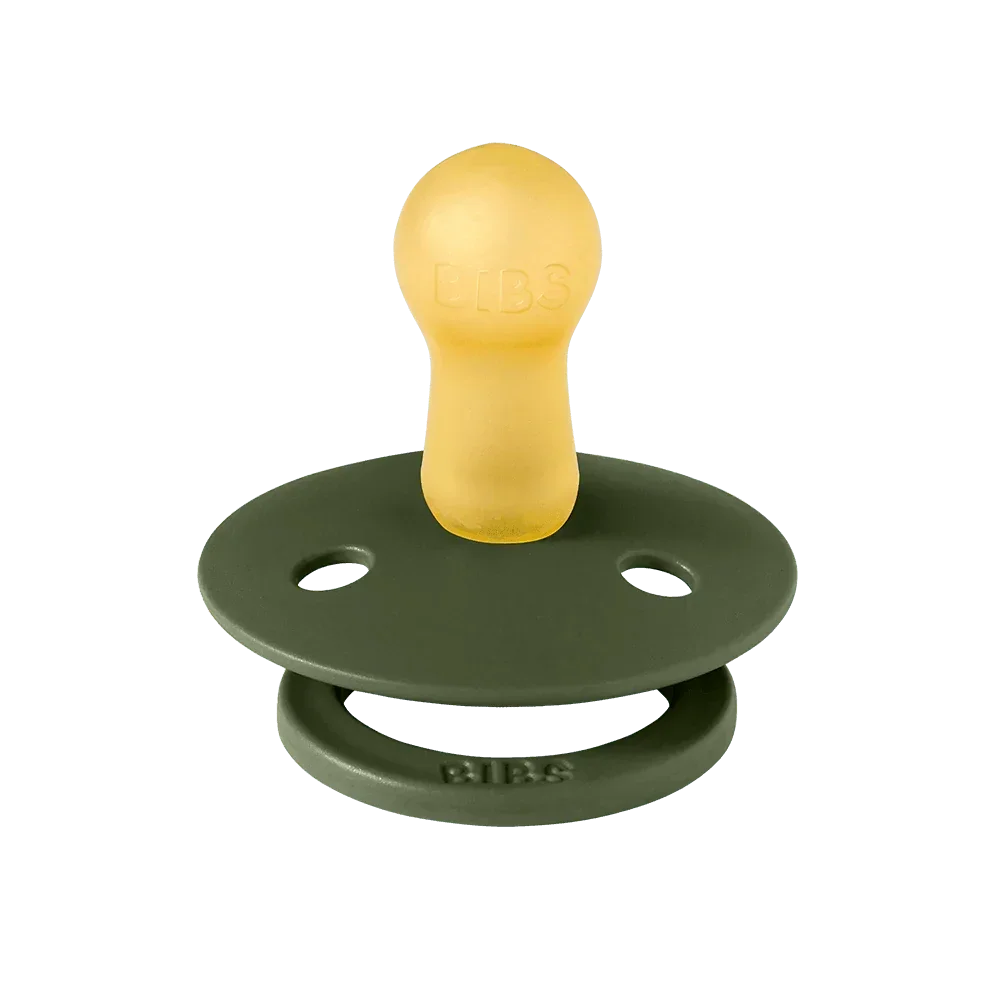Natural rubber latex
Natural Rubber latex is a natural material made from a sticky milky fluid tapped from the Hevea tree. The fluid is refined to the brown/yellow rubber you know from your pacifiers; a super soft, elastic, and resilient material very much resembling the mother’s soft nipple.
The natural material comes with a natural aging process affected by natural influences like UV light, air, saliva, and heat. The elasticity of the material allows the nipple to change shape and size because of the baby’s strong vacuum, this means that the nipple in some cases can expand if it is not replaced in time.
Natural rubber latex pacifiers should be scalded rather than boiled and replaced every 4-6 weeks for safety and hygienic reasons.
Since latex is a natural material color variation may occur.





















